I hope you enjoy this grass-to-garden series as much as I do. This is Jackie’s house and what it looked like before she ripped out the front lawn. Even though it doesn’t look as pretty as it will (wait til the end), she has already done a lot of work (this was in early 2007) to make it better.
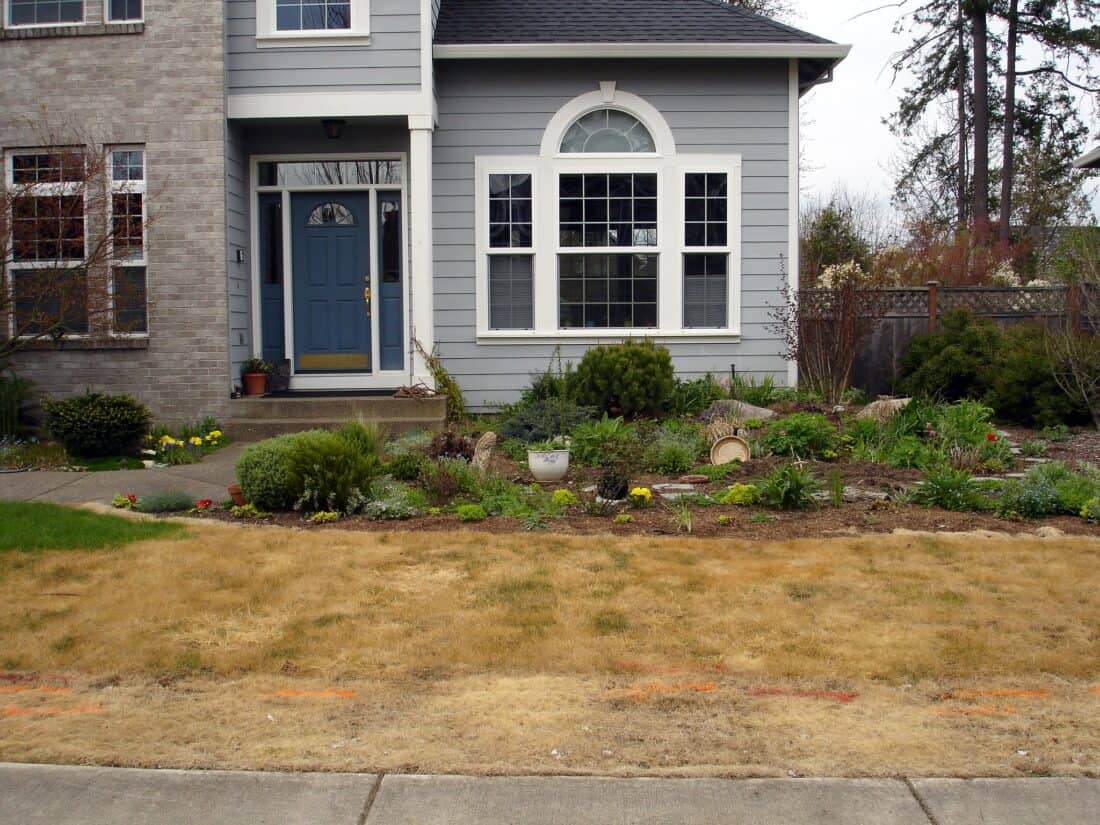
How to make a garden better
Making a garden better is arguably a subjective thing. But there are some universally agreeable standards that we can judge gardens by and confidently say if it has gone from worse to better. What are they?
- How much diversity of planting is there? (And thus, how well is it providing ecosystem services?)
- How much outside resources does the garden demand? I am not talking about the time it takes to weed. What is important is the water and fossil fuels (in the form of mowing and power tool tasks but also in importing mulch and other materials and using synthetic fertilizers).
Outside of becoming art critics, these are the only real measures of a ‘good’ garden. So, while Jacki’s front garden does subjectively (IMO) get a lot prettier – I want to talk more about how much better this garden is than what it was before in that less subjective way.
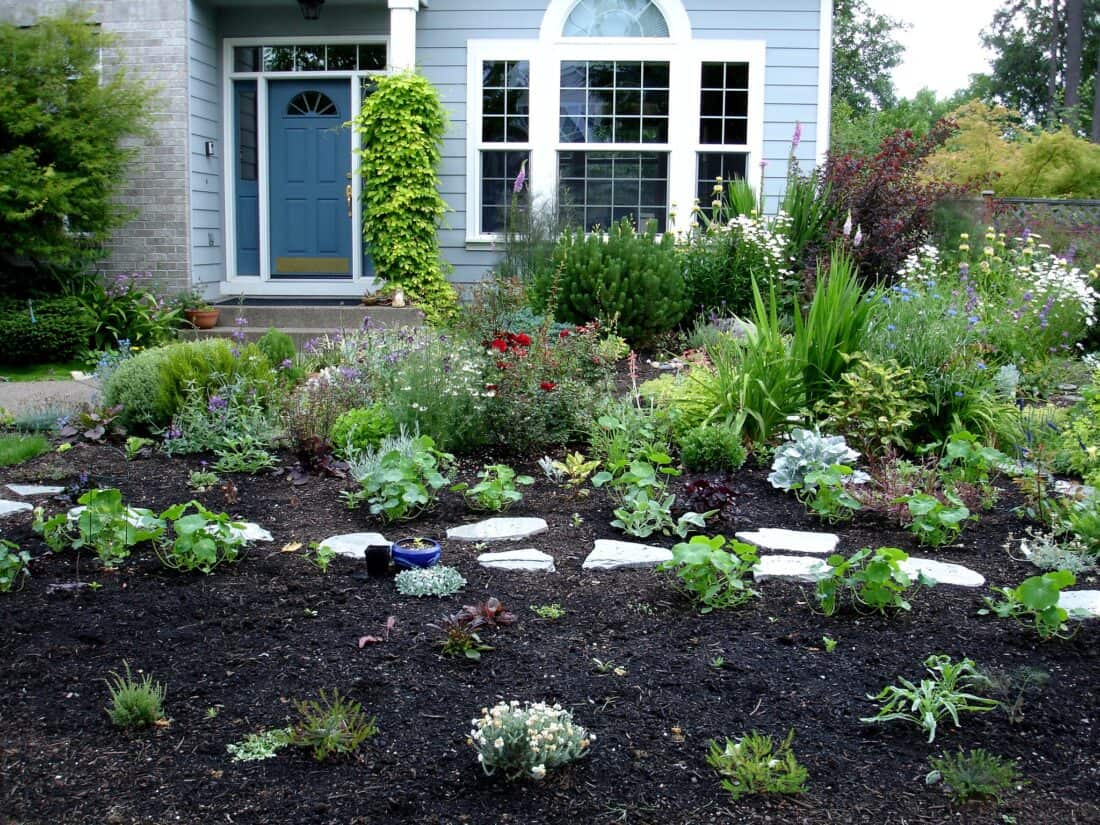
When she bought the house, it was planted with standard and unimaginative foundation shrubs. Most of the time, these plants are eventually going to cover the front windows, and more often than not, they aren’t anything that is adding much to the environment.
Here, The front bed was improved (with lots of different plants). However, there was still a large monoculture of high-maintenance turf grass that dominated the design. Jacki removed the grass (or perhaps she used a lasagne layering technique – it is not clear), but the grass that was there is now a planting bed.
Why is going from grass to garden better?
Jacki lives in Portland, Oregon, where I suspect the grass needs little extra water (so that is good), but it will certainly require mowing (which is not only a chore but requires resources to power the mowing device) and most importantly – the grass offers nothing in the way of ecosystem services. If you aren’t sure what ecosystem services are – watch my free Eco Garden Audit Masterclass, where I talk about what we should be expecting from our landscapes and how to design them to be better for the health of our planet and local environment.
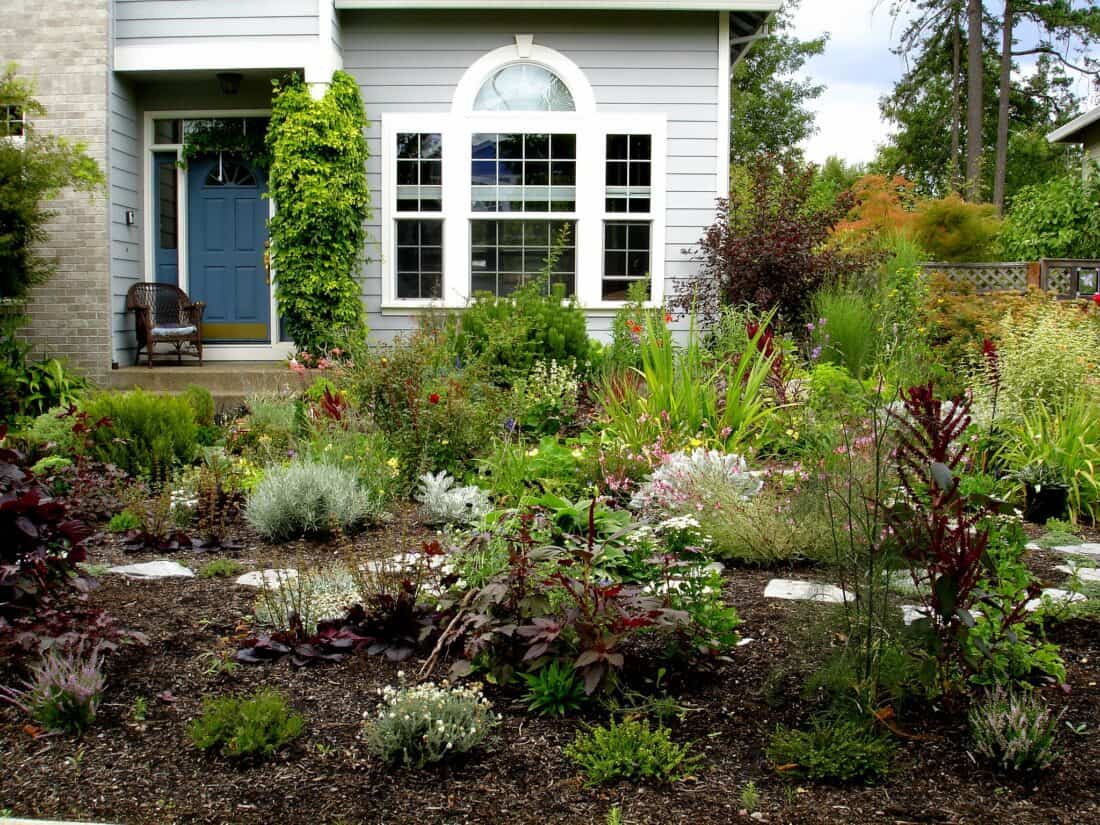
What I like about this is the progression that it is so encouraging to see a garden transform over time. If you are looking for inspiration for front gardens without grass – this a great post to get a realistic expectation for how new (non-turf) plants will fill in over time.
If you want to see more of the month-by-month shots – Jacki kept up the monthly images for many years – you can see the whole project here.
This is the end of the first year, 2007 – it is an exciting start, but there is a lot to come.
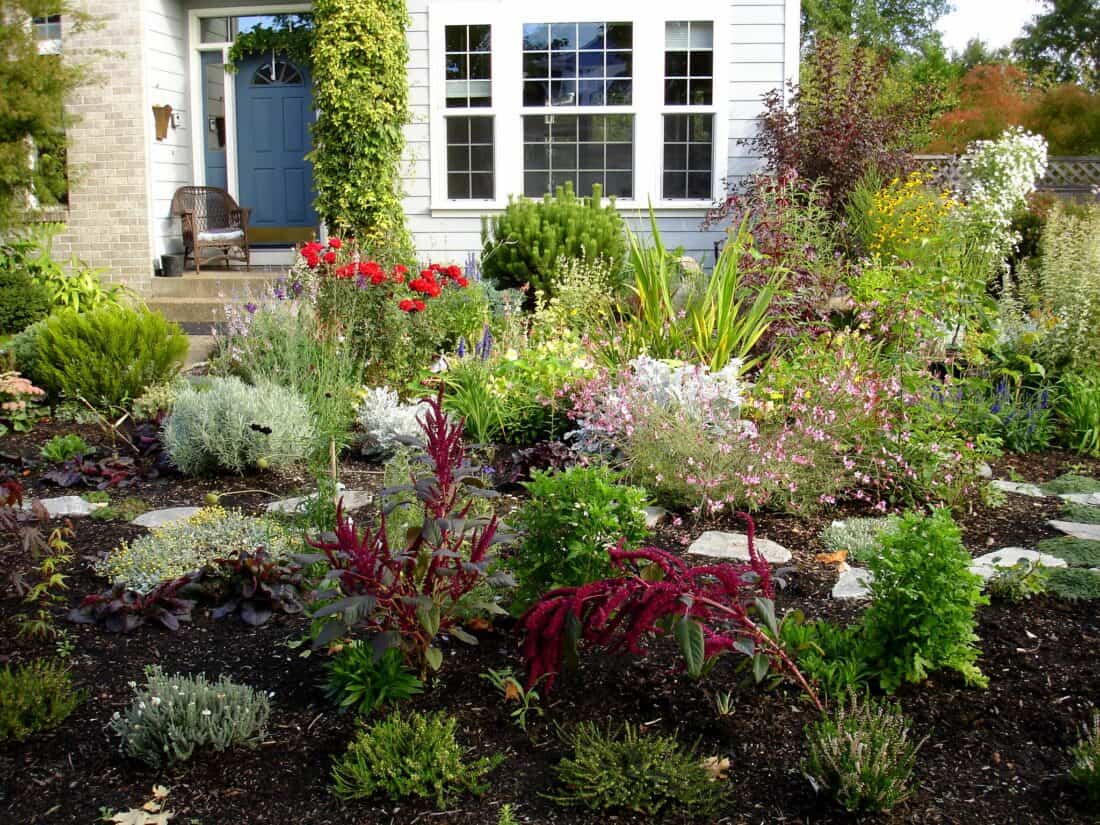
And then we move into the second growing season – year #2.
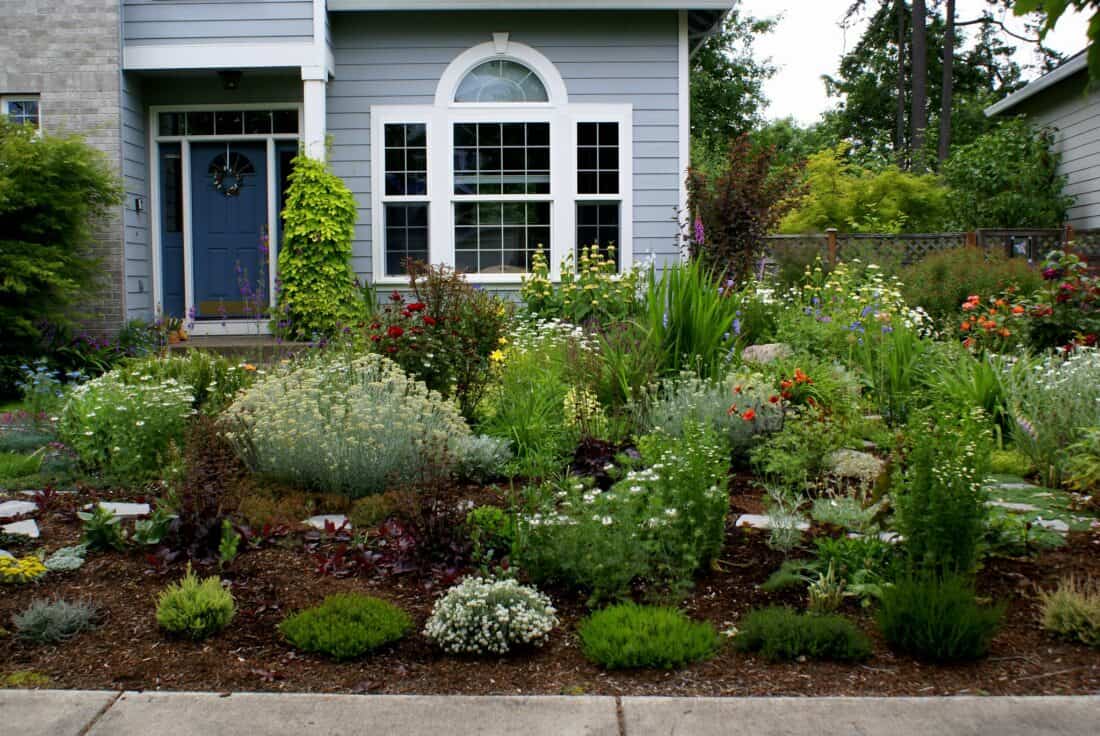
Things started to become a bit more organized, but two years on, in 2009, is when things really started to shine.
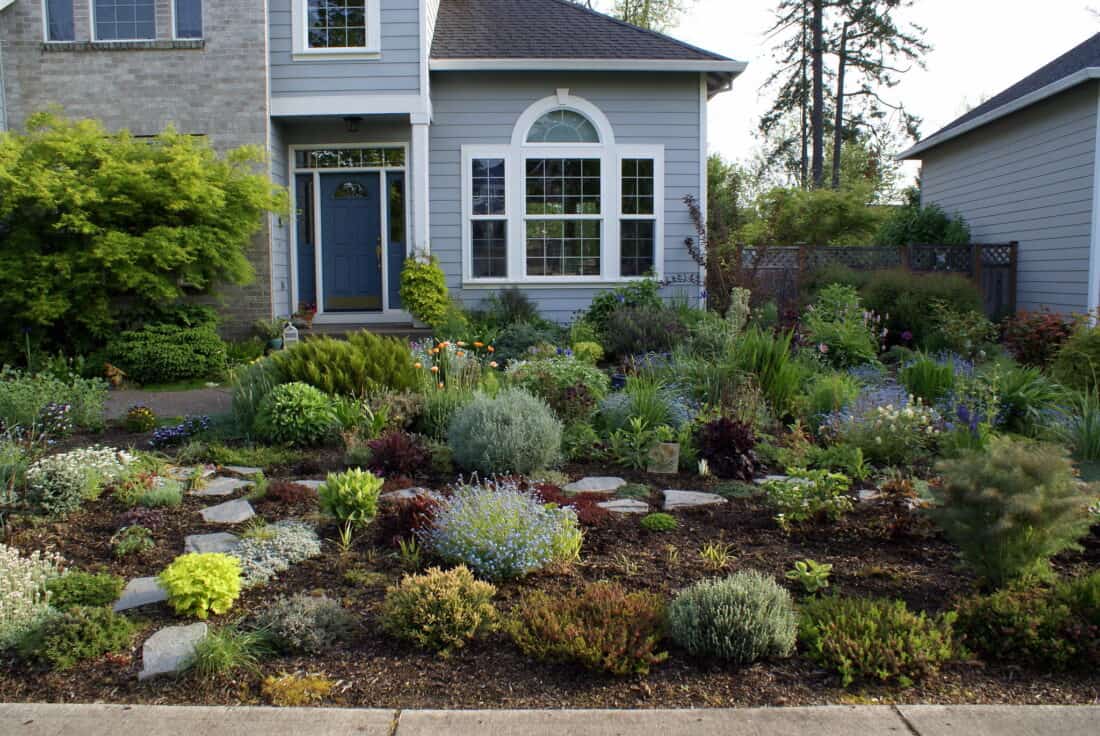
Is the garden adage true?
“First they sleep, then they creep, then they leap.”
I don’t know – what do you think?
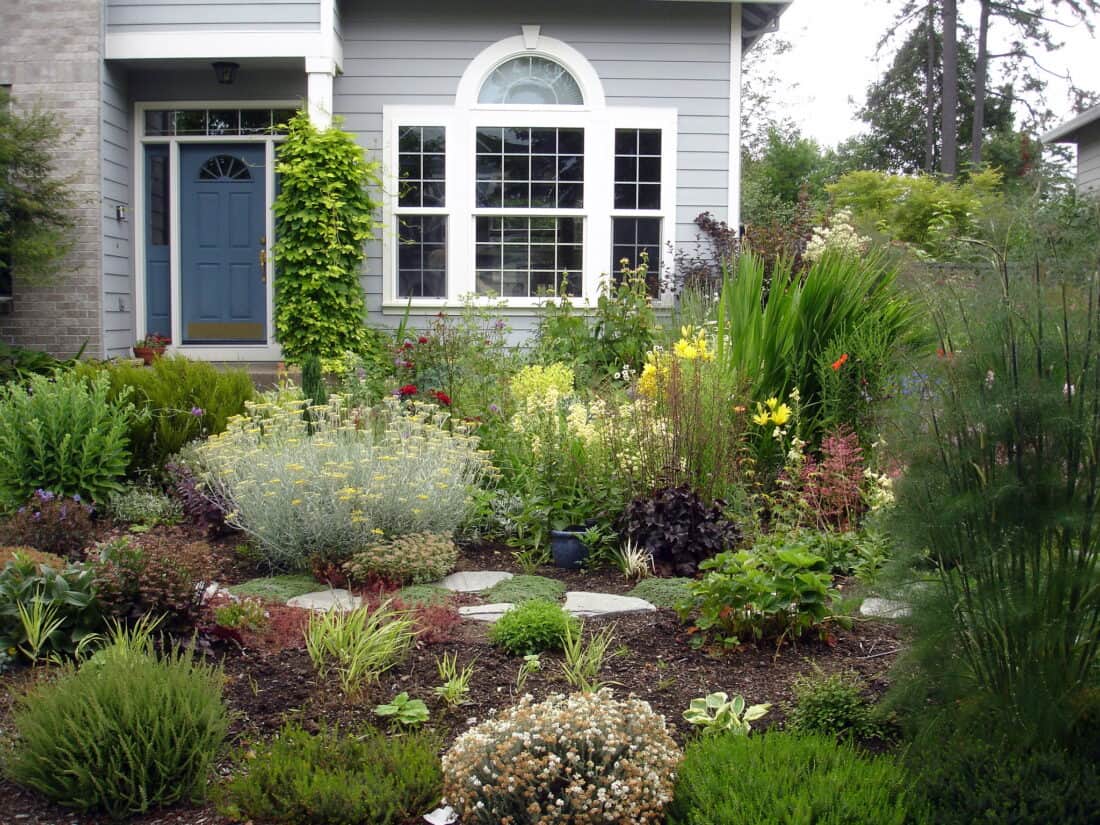
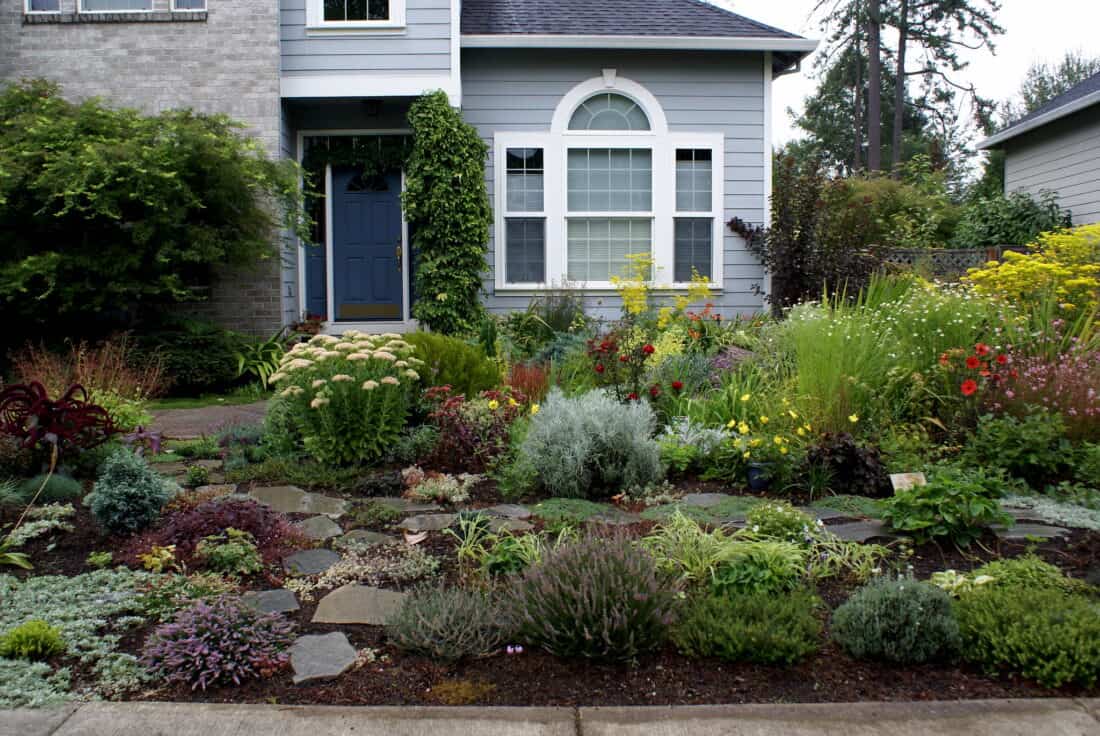
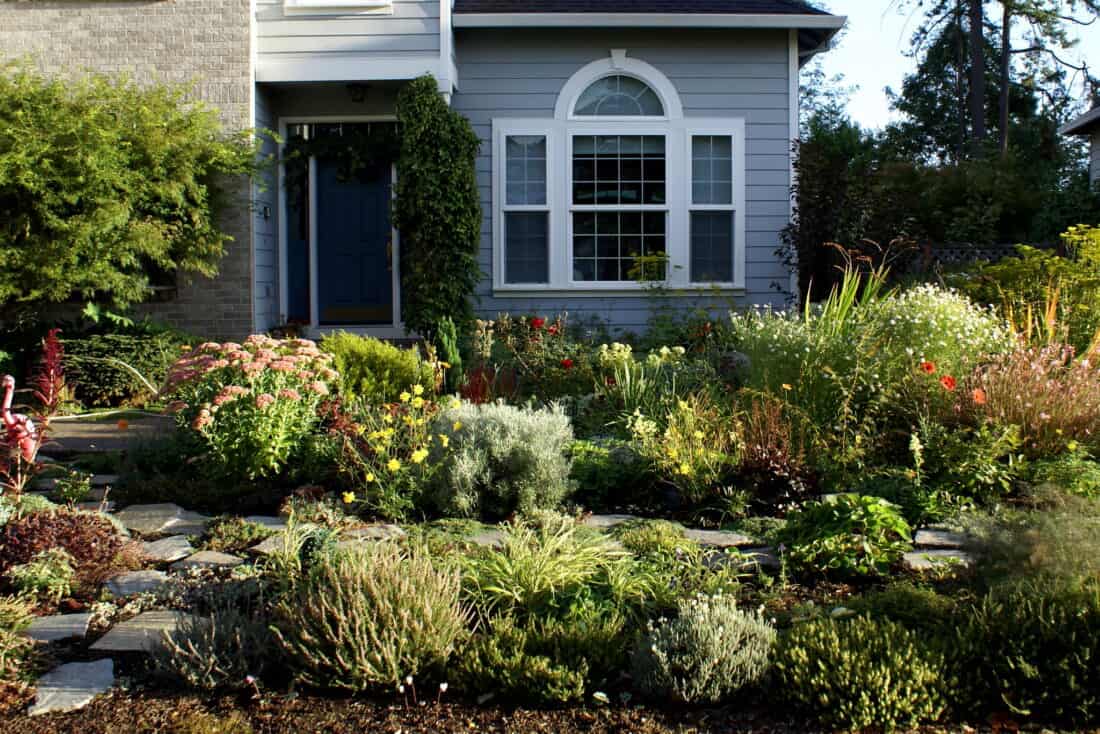
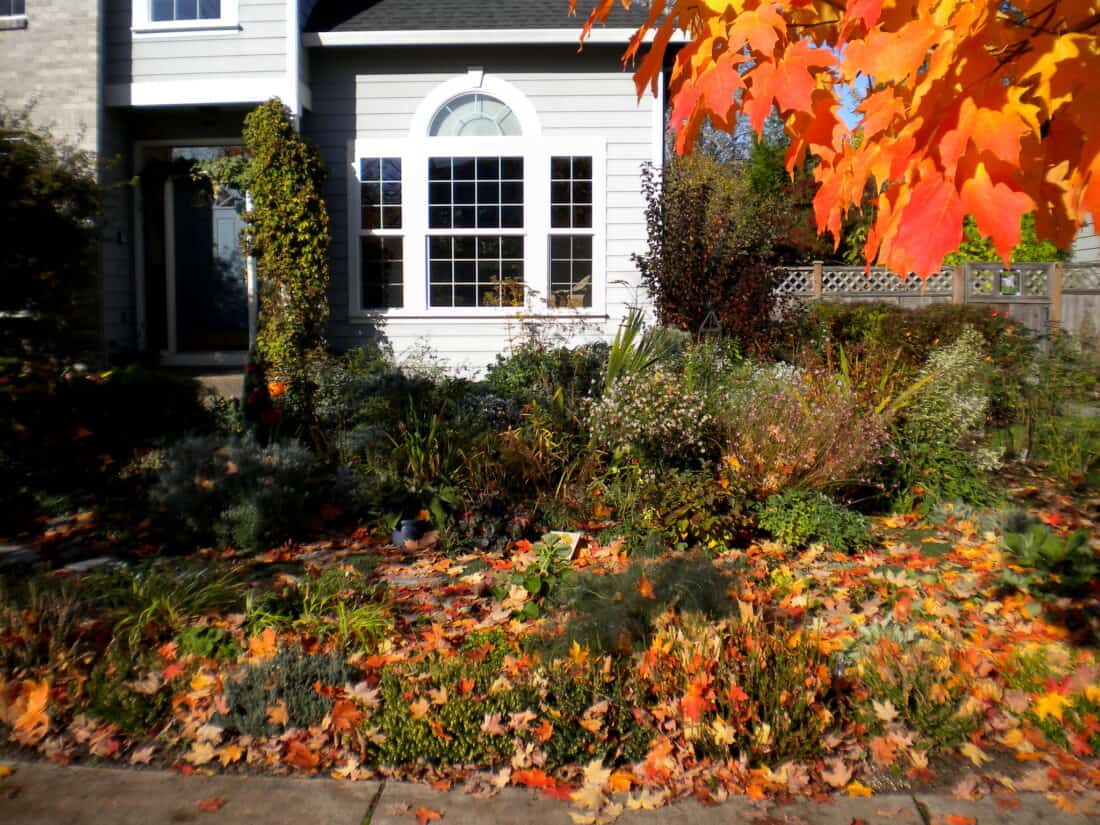
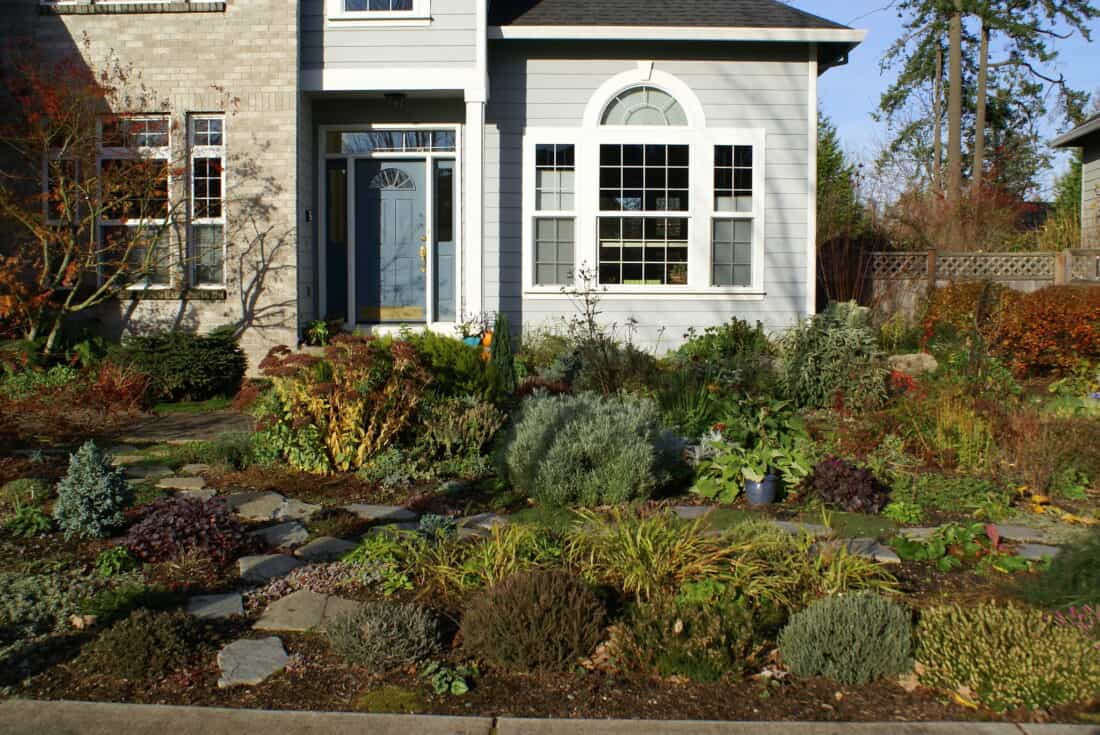
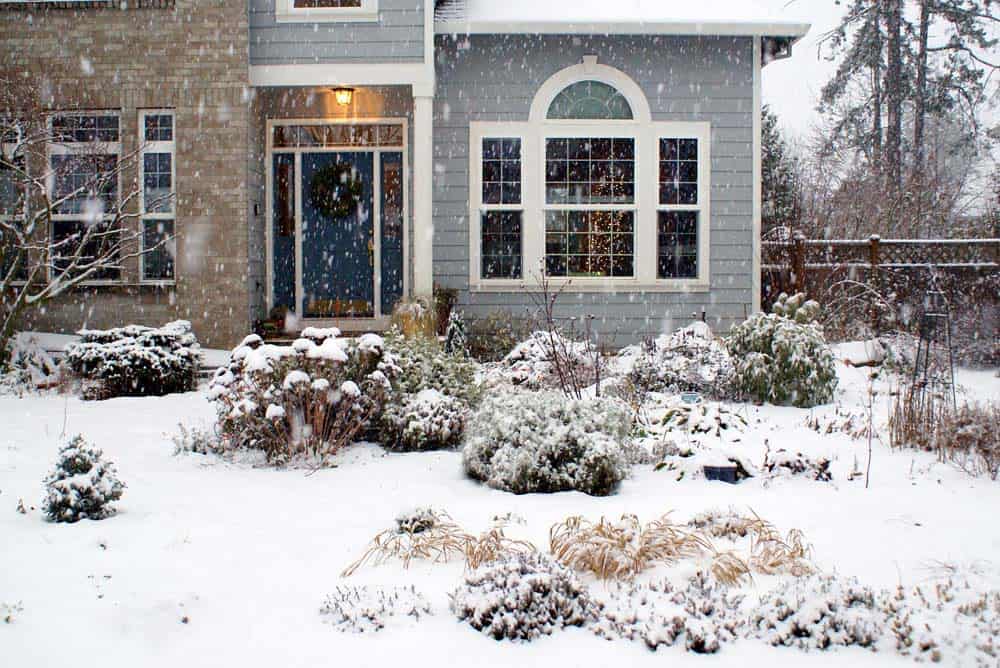
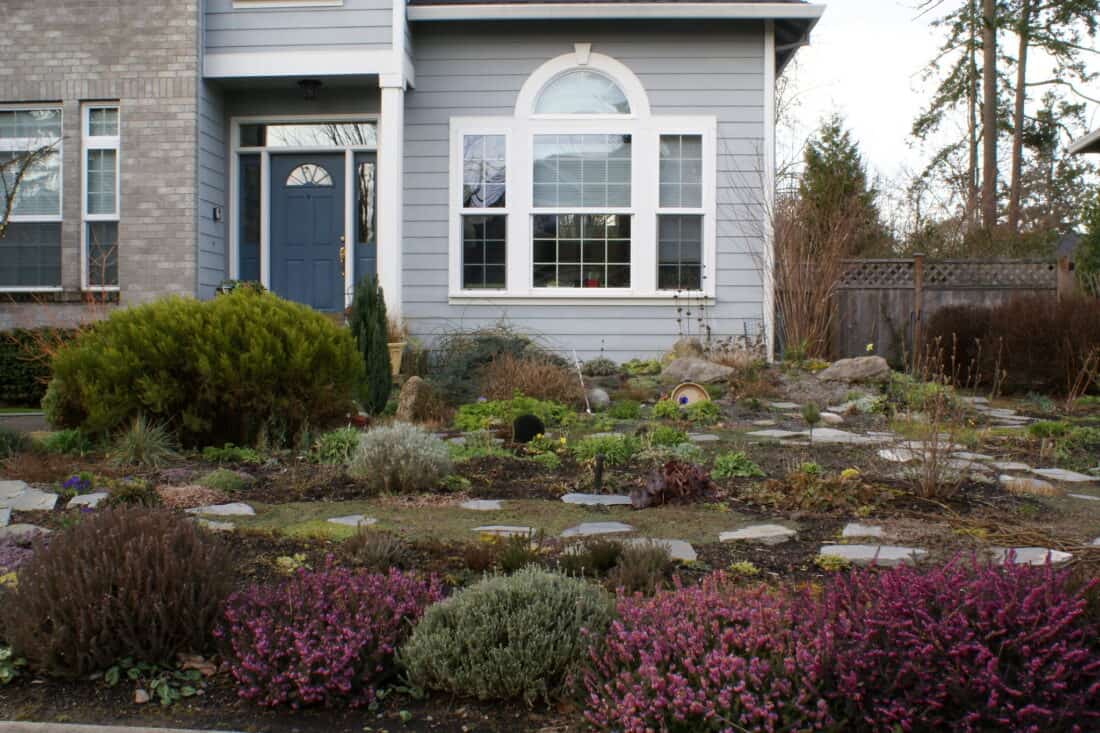
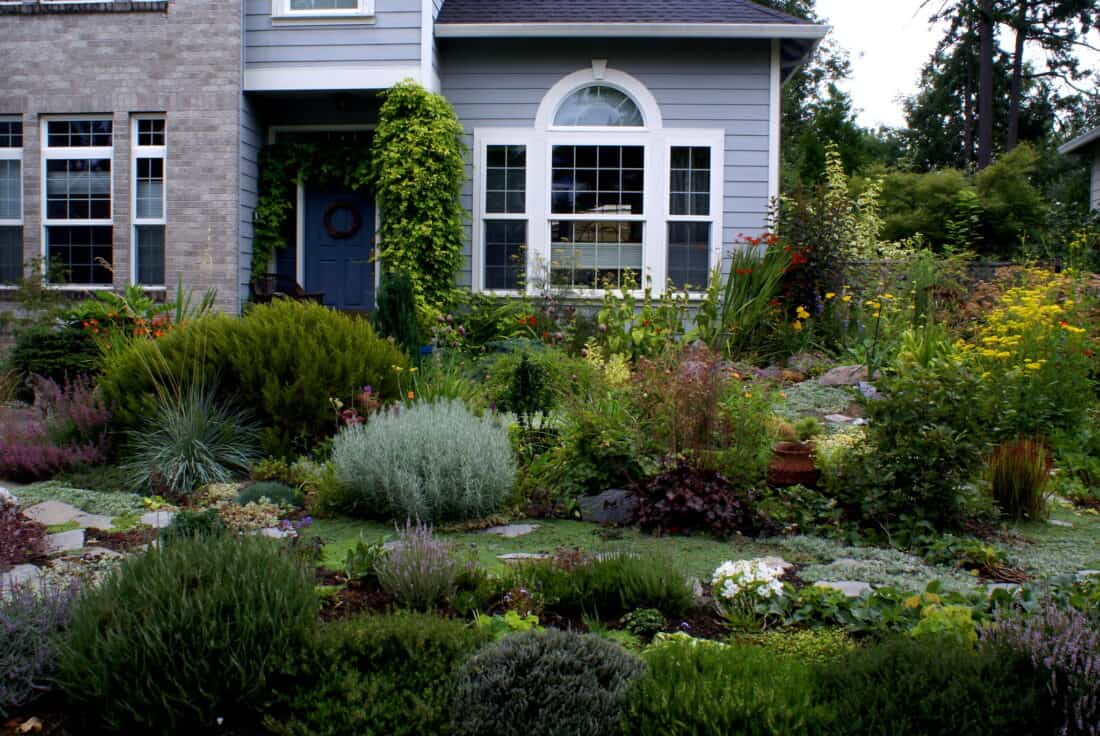
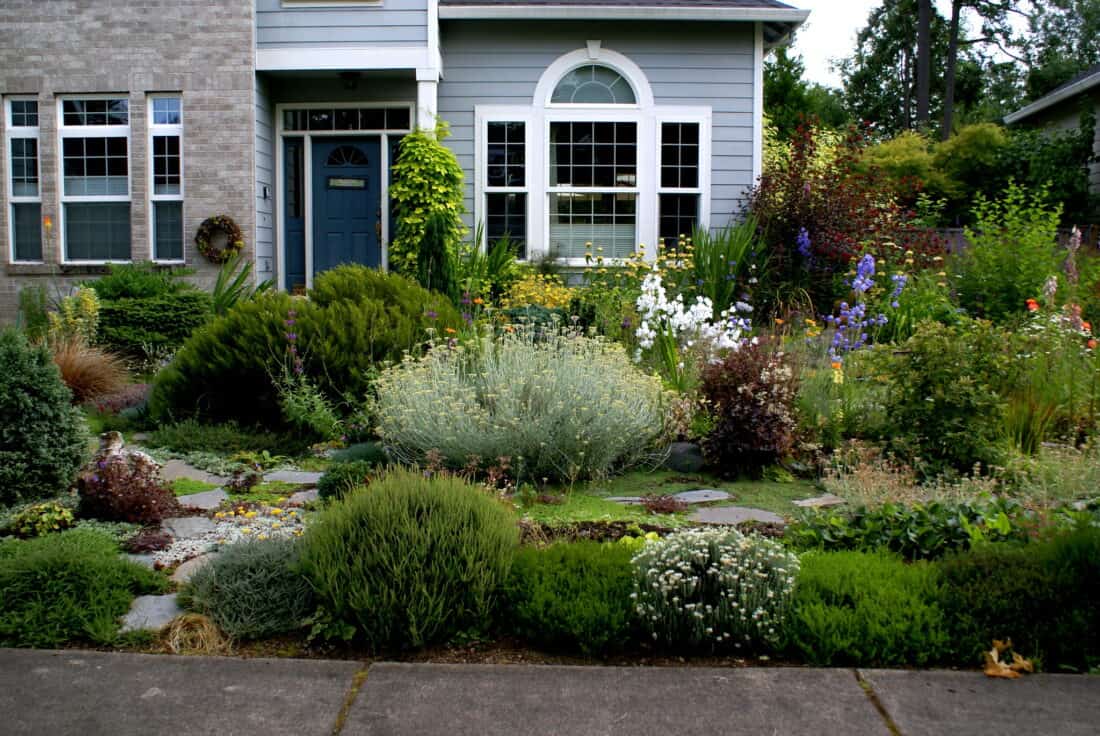
A photograph a month – Can you do it and learn something about your landscape?
I am attracted to this series because it perfectly displays the beauty that can come with patience and steady work on the landscape. Transforming a patch of grass into a garden is hard work. It can be so hard to keep the faith that a garden will get better and better as the years go by. I hope this inspires you.
If you want to see all the in-between pictures, you should check out Jackie’s flickr stream.
If you want to create something that is better – focus on two main things – more plants and more types of plants. Both of these will increase the biodiversity of your neighborhood (which will, in turn, help other species and the ecosystem), and it will make your job easier as a gardener. A fuller garden is not more work – in fact, it is often less work. A full, healthy garden maintains lower and more moderate ground temperatures, stores more water, traps more carbon in the soil, and it crowds out the weeds.
If you have questions about how to make your garden greener (as in better for the environment) – feel free to ask questions in the comments. I am happy to help.
-Rochelle
P.S. Here are some more posts you might enjoy.
+comments+